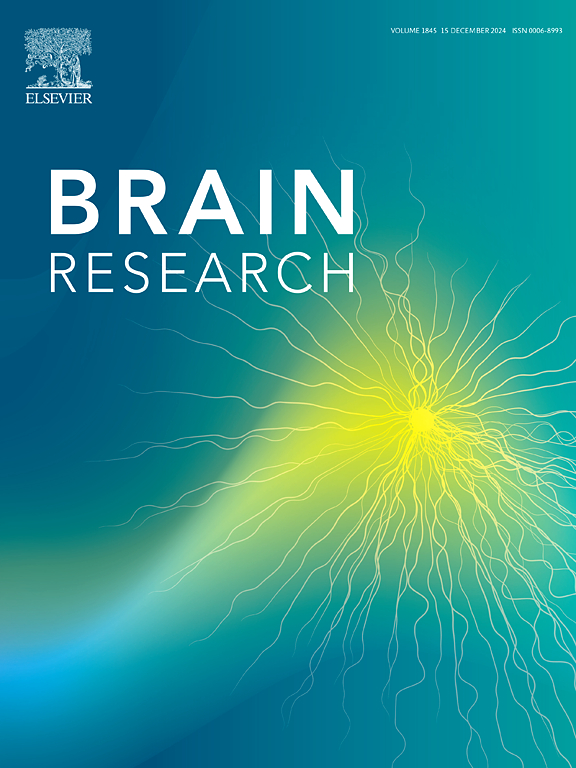Effects of mitochondrial O-GlcNAcylation in pericytes after mechanical injury
IF 2.7
4区 医学
Q3 NEUROSCIENCES
引用次数: 0
Abstract
Damage to vascular cells comprise an important part of traumatic brain injury (TBI) but the underlying pathophysiology remains to be fully elucidated. Here, we investigate the loss of O-Linked β-N-acetylglucosamine (O-GlcNAc) modification (O-GlcNAcylation) and mitochondrial disruption in vascular pericytes as a candidate mechanism. In mouse models in vivo, TBI rapidly induces vascular oxidative stress and down-regulates mitochondrial O-GlcNAcylation. In pericytes but not brain endothelial cultures in vitro, mechanical stretch injury down-regulates mitochondrial O-GlcNAcylation. This is accompanied by disruptions in mitochondrial dynamics, comprising a decrease in mitochondrial fusion and an increase in mitochondrial fission proteins. Pharmacologic rescue of endogenous mitochondrial O-GlcNAcylation with an O-GlcNAcase inhibitor Thiamet-G or addition of exogenous O-GlcNAc-enhanced extracellular mitochondria ameliorates the mitochondrial disruption in pericytes damaged by mechanical injury. Finally, in a pericyte-endothelial co-culture model, mechanical injury increased trans-cellular permeability; adding Thiamet-G or O-GlcNAc-enhanced extracellular mitochondria rescued trans-cellular permeability following mechanical injury. These proof-of-concept findings suggest that mitochondrial O-GlcNAcylation in pericytes may represent a novel therapeutic target for ameliorating oxidative stress and vascular damage after mechanical injury following TBI.

机械损伤后周细胞线粒体o - glcn酰化的影响
血管细胞损伤是创伤性脑损伤(TBI)的重要组成部分,但其潜在的病理生理机制尚未完全阐明。在这里,我们研究了O-Linked β- n -乙酰氨基葡萄糖(O-GlcNAc)修饰(O-GlcNAc酰化)的缺失和血管周细胞线粒体破坏作为一种候选机制。在小鼠体内模型中,创伤性脑损伤可快速诱导血管氧化应激并下调线粒体o - glcnac酰化。在体外培养的周细胞而不是脑内皮细胞中,机械拉伸损伤下调线粒体o - glcnac酰化。这伴随着线粒体动力学的中断,包括线粒体融合的减少和线粒体裂变蛋白的增加。用O-GlcNAcase抑制剂Thiamet-G或添加外源性O-GlcNAcase增强的细胞外线粒体对内源性线粒体o - glcnac酰化的药理学补救可改善机械损伤周细胞线粒体的破坏。最后,在周细胞-内皮共培养模型中,机械损伤增加了细胞间通透性;添加Thiamet-G或o - glcnac增强的细胞外线粒体可挽救机械损伤后的细胞间通透性。这些概念验证的发现表明,周细胞中的线粒体o - glcn酰化可能是改善TBI后机械损伤后氧化应激和血管损伤的新治疗靶点。
本文章由计算机程序翻译,如有差异,请以英文原文为准。
求助全文
约1分钟内获得全文
求助全文
来源期刊

Brain Research
医学-神经科学
CiteScore
5.90
自引率
3.40%
发文量
268
审稿时长
47 days
期刊介绍:
An international multidisciplinary journal devoted to fundamental research in the brain sciences.
Brain Research publishes papers reporting interdisciplinary investigations of nervous system structure and function that are of general interest to the international community of neuroscientists. As is evident from the journals name, its scope is broad, ranging from cellular and molecular studies through systems neuroscience, cognition and disease. Invited reviews are also published; suggestions for and inquiries about potential reviews are welcomed.
With the appearance of the final issue of the 2011 subscription, Vol. 67/1-2 (24 June 2011), Brain Research Reviews has ceased publication as a distinct journal separate from Brain Research. Review articles accepted for Brain Research are now published in that journal.
 求助内容:
求助内容: 应助结果提醒方式:
应助结果提醒方式:


